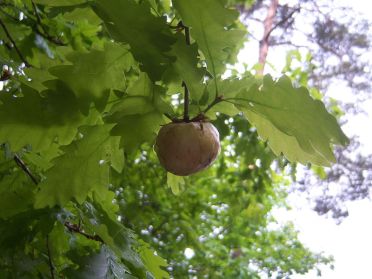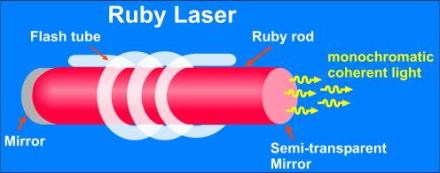Ethiopia National Day, celebrates downfall of Derg junta in 1991:
Ethiopia, also sometimes called Abyssinia, has over 93 million people, the most people living in a landlocked country in the world.

A 4.4 million year old humanoid skeleton was uncovered here, as well as ‘Lucy’, the earliest skeleton of a human. It is thought Homo sapiens first evolved here, and later set out to the Middle East; it’s also where the coffee bean first appeared.
In around 300 A.D. Ethiopia’s Kingdom of Aksum was as powerful as Rome, Persia, China and India, and was the first empire to adopt Christianity.
In 1270 the Solomonic dynasty began rule in Ethiopia, claiming descent from King Solomon and the Queen of Sheba, making them the second-oldest monarchy in the world (after Japan’s Imperial Dynasty).
From 1508 Ethiopia had trade links with Portugal, and in the Ethiopian-Adal War (Adal was a Muslim state in the Horn of Africa) Portugal and the Ottoman Empire took sides as well.
From 1755 Ethiopia became cut off from the rest of the world and was run by warlords.
From around 1850 Ethiopia allied with Britain, who helped it to unite and reestablish the emperor’s power. Turkey and Egypt invaded in 1875-6, but Ethiopia won.
In 1889 Menelik II became Emperor, and built roads and schools and the capital, Addis Ababa.
He also let Italy have a bit of northern Ethiopia, now Eritrea, in return for arms and support. Italy took the mick and expanded the offered territory, but Ethiopia defeated them in the Battle of Adwa, 1896. This makes Ethiopia the only African power to have defeated Europe and never been colonised.
From 1916 Emperor Haile Selassi I became emperor. Selassi was originally called Duke, or Ras, Tafari, and is worshipped by the Rastafarians as the Second Coming.
He was making Ethiopia all independent and modern when Italy invaded again. Selassi appealed to the League of Nations, and became Time magazine’s Man of the Year.
In WWII Britain pushed Italy out of Ethiopia and gave Ethiopia independence again.
In 1942 Selassi abolished slavery, even though about 2-4 million people out of the 9 million population were slaves.
In 1952 Ethiopia became a federation with Eritrea, then annexed them in 1962, who fought back and gained independence.

Mariam
In 1974, following an increase in oil prices, Selassi was deposed by a Soviet-backed Marxist-Leninist junta called the ‘Derg’. Led by Mengistu Haile Mariam, they killed around 500,000 people, and Mariam was found guilty of genocide in 2006 and sentenced to 20 years in prison.
In the 1980s 1 million died from famine.
Soviet Russia collapsed in 1989 and Ethiopia lost its financial support, and Mariam had to flee as the people turned on him.
In 1995 Ethiopia held its first democratic elections.
In 1998-2000 the Ethiopia-Eritrea war cost both countries $1 million a day because Ethiopia had taken the area of Badme (it still has it).

The Ethiopian People’s Revolutionary Democractic Front, led by Meles Zenawi, has been in power since 1991 and although it lost the 2005 elections it still claimed power.
Ethiopia still uses the Julian calendar with 13 equal months; it is currently 2003.
Day and night are always the same as Ethiopia is on the equator, and instead of using a 12-hour clock beginning at midnight or noon, 1 o’clock is at daybreak, 6am, or at 7pm if it’s 1 o’clock at night (yes, I did explain that terribly).
It has these unique churches carved straight into the ground:
Nepal Republic Day
People have lived here for more than 11 thousand years. Around 500 B.C. a Nepalese prince called Siddharta Gautama gave up his title and tried to become enlightened – he is now known as Buddha.
Nepal was sometimes part of Indian empires like the Mauryan and Gupta Empires, and Nepal became more Hindu than Buddhist.
In 1482 Nepal was three separate kingdoms, Kathmandu, Patan, and Bhaktapur. In the mid-18th century, a Gurkha (soldier) king, Prithvi Narayan Shah, and he took over looooooads until China felt he was getting a bit close and declared war. And the Brits, who were all over India, also got scared and declared war, but we massively underestimated how fierce the Gurkhas are and were nearly beaten.
In 1846 the Nepalese queen wanted to get rid of a military leader, Jung Bahadur Rana. He fought back, and this led to the Kot Massacre, where loads of princes and chieftains were killed and Rana became king. He allowed the Prime Minister more power than him, and was very pro-British.
In 1959-89 democracy was abolished and the king just had layers and layers of advisers. In 1991 they got democracy back; meanwhile, Bhutan decided to get rid of anyone of Nepalese descent and sent about 100,000 people over, who still just live in a refugee camp in eastern Nepal today.
In 1996 the Communist Party began a civil war until 2006, with 12,000 people killed. In 2001 the Crown Prince killed the king, queen and seven other royals for disagreeing with his choice of wife. The next king entered negotiations with the Communists and eventually agreed to stand down, and Nepal became a secular republic with the Communist Party in coalition with basically all the other parties, which sounds nice.
Nepal has eight of the world’s 10 tallest mountains, including Mount Everest. We like to build a mountain of cushions, climb to the top and have a picnic. Weirdly satisfying. Nepal is the only country to have a non-rectangular flag.
Other events today:
























 1609 Shakespeare’s Sonnets first published
1609 Shakespeare’s Sonnets first published 1927 Charles Lindberg sets off on the first nonstop flight across the Atlantic; 1932 Amelia Earhardt does the same, first time by a woman.
1927 Charles Lindberg sets off on the first nonstop flight across the Atlantic; 1932 Amelia Earhardt does the same, first time by a woman. Josephine Baker Day – an American-born French entertainer who helped in the civil rights movement in America by refusing to perform for segregated audiences.
Josephine Baker Day – an American-born French entertainer who helped in the civil rights movement in America by refusing to perform for segregated audiences. World Metrology Day (celebrates the use of the metre) – how tall are you in metres? How far can you throw a ball? How far can you throw a flipflop?
World Metrology Day (celebrates the use of the metre) – how tall are you in metres? How far can you throw a ball? How far can you throw a flipflop?

 Carlos Manuel de Céspedes
Carlos Manuel de Céspedes



















